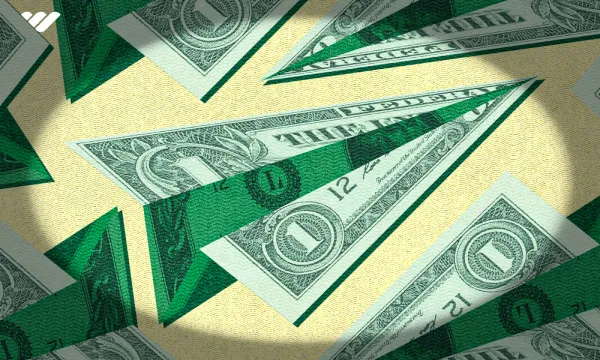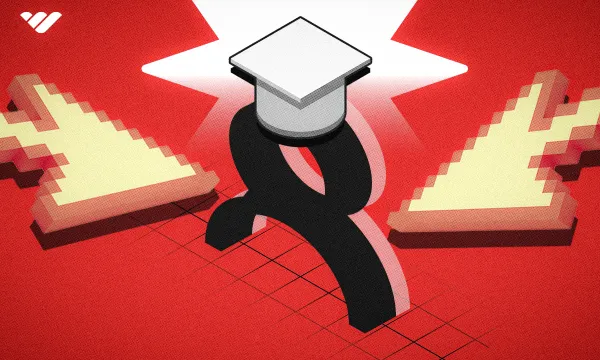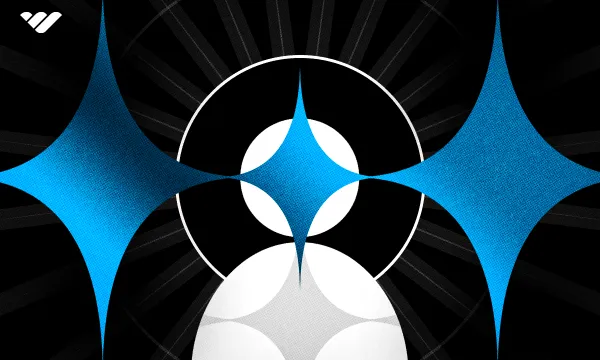As creators, we spend our time creating tons of content, from blog posts to TikTok videos to digital products, emails, and more. But what is the ROI from all of this? It can take a year or more to monetize a blog, Youtube channel or make consistent sales on Instagram. What if I told you there's a faster and easier way to create content that generates income?
It's with a paid newsletter. And no, I'm not talking about monetizing your email list by adding sponsors or links to your shopping page. If writing is your jam, newsletters are a simpler way to grow a dedicated audience that is committed to following you – even if they have to pay for it.
But how hard is it to create a paid newsletter, and what type of content is best? Let's explore the world of paid newsletters and get the low-down on creating an awesome newsletter that people will want to pay for.
Eager to jump ahead? Click through to:
- What is a Paid Newsletter?
- Why You Should Create a Paid Newsletter
- 7 Steps to Creating a Paid Newsletter
- Examples of Successful Paid Newsletters
- How Whop Can Help You Launch a Paid Newsletter
What is a Paid Newsletter?
A paid or premium newsletter is based on a subscription model. A subscriber pays a monthly subscription fee to a creator – or business – in exchange for receiving exclusive content via email. The fee can be a recurring monthly or annual charge, and they provide a consistent and reliable revenue source for creators.
Content in a paid newsletter is typically more in-depth, specialized, or personalized than what you might offer for free elsewhere.
This might be:
- Behind-the-scenes or sneak peeks of your business
- Your thoughts and analysis on a topic
- Specialized or in-depth tutorials
- Reviewing subscriber content
For example, if you’re an author, you can share exclusive sneak peeks of upcoming books, details about your writing process, and personal stories about your journey as an author that your subscribers would love.
Besides a behind-the-scenes look into your work, you can offer your take on current news events. For example, top SEO expert Marie Haynes curates SEO news for her free newsletter. In these newsletters, she promotes her paid newsletter called Marie’s Thoughts. For her paid newsletter, Marie dives deep into one SEO topic she’s learning more about.
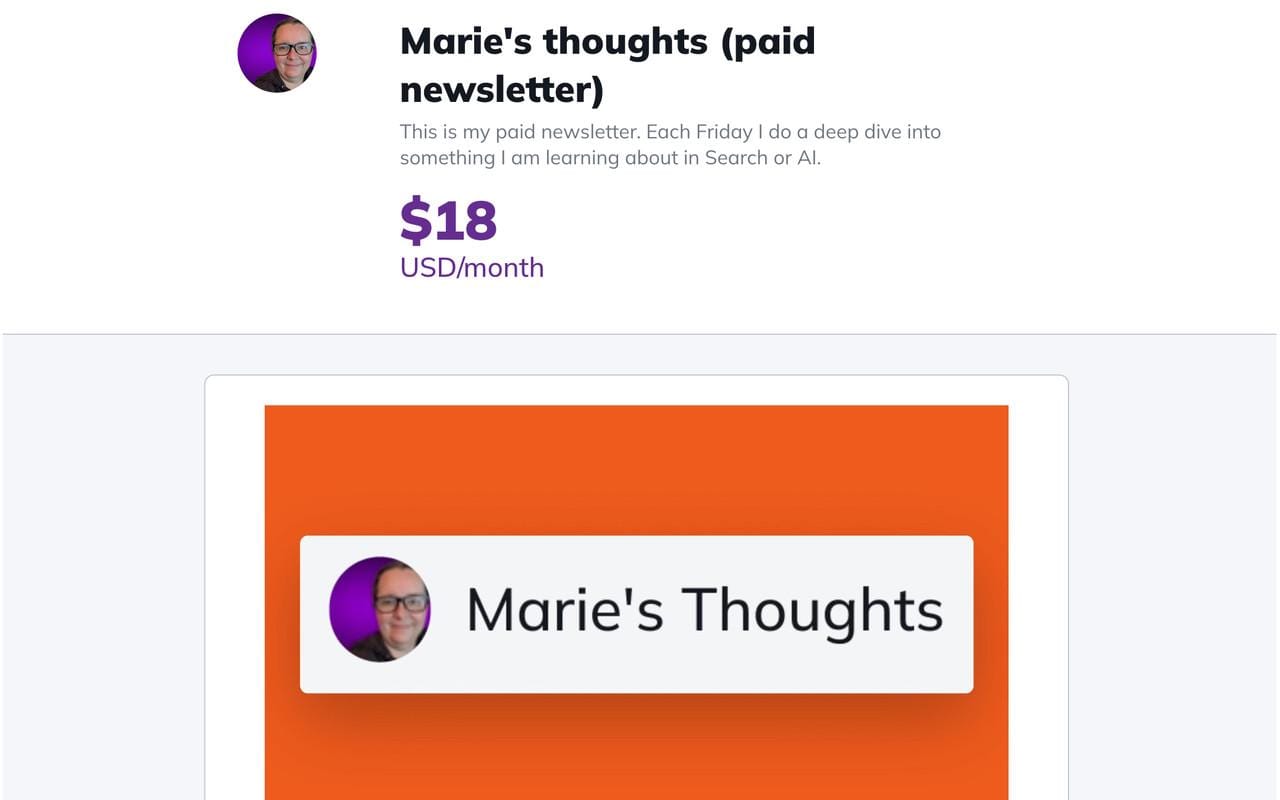
Specialized tutorials are another type of content you can create for your paid newsletter. If you’re a photographer, video editor or graphic designer, you can share advanced tutorials, processing tips, and even critiques of subscriber-submitted content.
For an easy paid newsletter idea, why not have your subscribers submit their content for review? If you’re a copywriter, you could review subscribers’ sales pages, client outreach letters, website copy, and more. This can help your subscribers improve their service or business, increasing their chances of subscribing to your paid newsletter.
Why You Should Create a Paid Newsletter
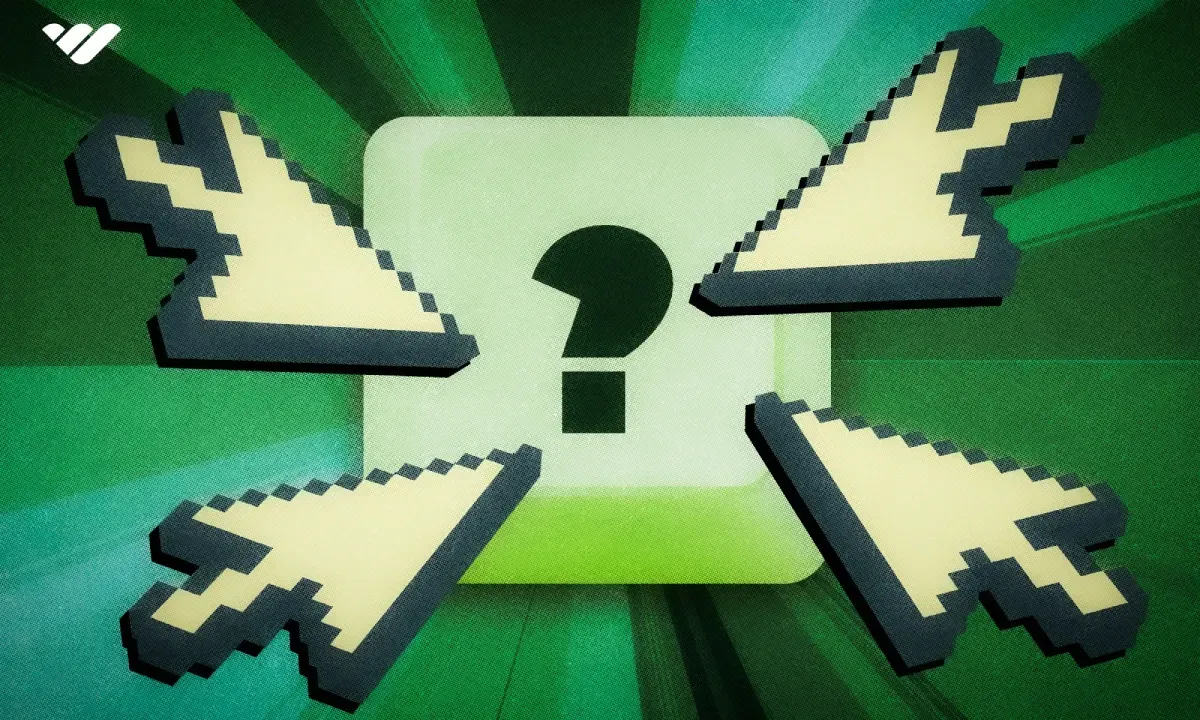
Look –
Deciding whether to launch a free or premium newsletter can be confusing. On one hand, a free newsletter can help grow your subscribers more quickly than a paid newsletter. It also has a lower barrier of entry for someone deciding to follow you or not.
But, according to the 2023 Linktree’s Creator Report, 59% of creators haven’t monetized their content. So, no matter how much free content you give your followers, you're wasting your time if they aren’t converting to clients, customers, or subscribers.
That’s why it’s better to move to a paid subscription model. Let’s look at more reasons why a paid newsletter is worth it.
Lower Overhead Costs
One of the best parts about starting a paid newsletter is that you don't have to break the bank to get it going. You're not looking at the expenses of other online ventures like trying to monetize a blog.
All you really need is a solid creator-focused platform to kick things off (that we will discuss a little later).
With minimal costs, you can start small and keep things simple. That means you can dip your toes into the world of online monetization without feeling overwhelmed by hefty initial investments.
Better Engagement
It’s just the facts: 41% of people engage with email marketing efforts more than with social media posts, which are at a dismal 1.5%. With this type of subscription model, you're focusing on a specific audience that's already shown a strong interest in your content because they chose to pay for it.
Because of this, you can tailor your content and offer more value, resulting in higher engagement and better retention rates. That means your paid newsletter is filled with the most engaged and loyal subscribers.
Control Over Monetization
A popular reason why people choose to start a paid newsletter is that they have more control over the pricing and structure. You can adjust subscription fees, offer different tiers, or provide special promotions based on your audience's preferences and feedback.
Plus, email marketing has one of the highest ROI’s at 14%, next to paid social media content and content marketing, ensuring you’ll profit from your paid newsletter.
Simpler Way to Create Content
Substack says you only need 4-8 hours a week to create the content for your paid newsletter. This means that out of all the most profitable digital products to create, paid newsletters – or subscriptions – are the quickest to start and maintain weekly.
You’re delivering valuable information concisely and focused, which is often less time-intensive than producing longer content like videos or in-depth blog posts. This simplicity can make maintaining a consistent publishing schedule easier, keeping your subscribers engaged and looking forward to each new issue.
7 Steps to Creating a Paid Newsletter
With all of that said, let’s jump into the steps to creating a paid newsletter.
1. Decide On Your Topic & Audience
As a creator, determine the topic and audience of your newsletter. Consider your passions and the unique insights or value you can offer. Think about what you're passionate about and what unique insights or value you can offer.
This passion is your niche, or focussed topic. Now, if you don’t know your niche, it’s time to get comfy and do some brainstorming. Write about what you're genuinely passionate about or have expertise in. Write what you're genuinely passionate about or have expertise in.
It could be anything from tech trends to personal development to niche hobbies to industry-specific insights. The key is choosing a topic you can consistently produce content about and enjoy talking about.
Next, think about your unique value proposition (I know, that’s a big businessy term). Your unique value will set your newsletter apart and make it worth paying for. Decide if you want to provide expert analysis, insider tips, or personal stories that aren't easily found elsewhere.
Then, consider who would be interested in and willing to pay for that content. Are they professionals in a certain field, enthusiasts of a specific hobby, or individuals seeking personal growth?
Understanding your audience's needs and interests will help tailor your content to keep them engaged and willing to subscribe. Create polls on social media or go Live on Instagram and answer questions from your followers to gain insight into their challenges.
2. Decide Your Pricing Model
Deciding on what to charge for your paid newsletter can be tricky if this is a new side hustle for you. One thing that might help is looking at the pricing benchmarks for paid newsletters, which are between $5-$15/month. This can give you a standard range to figure out your price, so you won’t end up with an outlier price.
But it doesn’t stop there.
You can also look at other benchmarks, like the free-to-paid conversion rate. If you decide to offer a free newsletter, which would funnel free subscribers into paid subscribers, the benchmark rate is around 3-5%.
According to Substack, with only 800 subscribers and pricing your newsletter only $7, you can stand to earn $4,638.
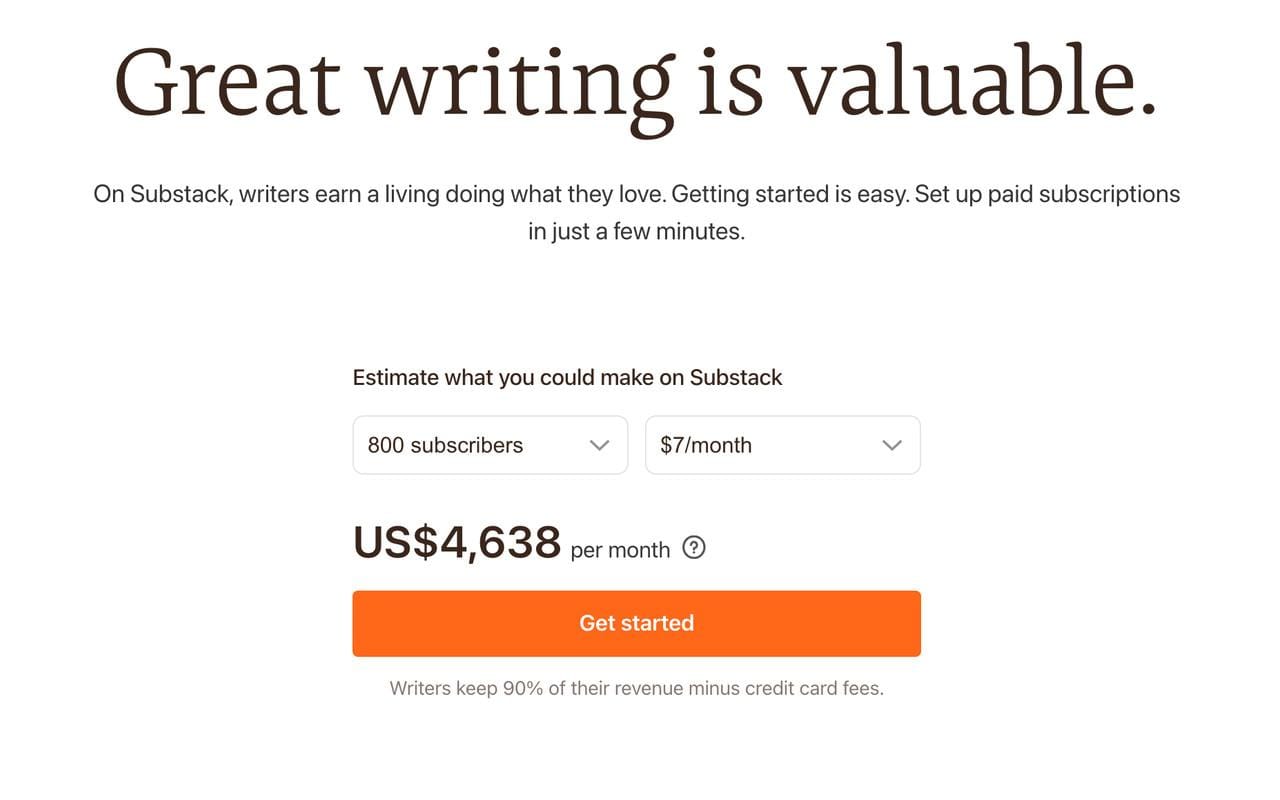
Another benchmark to consider is your churn rate. Churn rate refers to recurring subscribers stopping their subscriptions.
This is a normal part of using a recurring payment model and is expected from your paid subscribers. Standard monthly churn rates for paid newsletters are around 4%.
So, if your conversion rates for your newsletter are higher than your churn rate, you’re growing your newsletter. If you’re struggling to keep subscribers, you can tweak your pricing model – play with a tiered pricing model, for example – or add video to the content you provide or bring in experts to adjust those rates.
If benchmarks just aren’t your thing and you want to focus on sales, then start with the amount you want to earn each month with a paid newsletter.
As I mentioned, making an extra $5,000/month means having around 800 subscribers. The more money you want to earn each month, the more you need to charge or the more subscribers you need to convert.
- $10,000/month @ $5 = 2,000 subscribers needed
- $10,000/month @ $8 = 1,250 subscribers needed
- $10,000/month @ $10 = 1,000 subscribers needed
Knowing this can help you decide on the type of content you’ll provide and how you will market your newsletter.
Finally, you can set your newsletter price by monetizing the value you provide (the hardest to do, but ultimately, it will probably make you the happiest).
Is your content one-of-a-kind, or do you provide other content formats like videos, podcasts, or access to an online community? All of this ‘value’ has a sticker price that you need to feel comfortable setting and that your audience feels comfortable paying for.
3. Choose Your Platform
You can use many popular email marketing platforms and creator-focussed platforms to create a paid newsletter. Your choice might depend on your budget, needs, or the specific features you're looking for. So, let’s check out popular platforms and see what they offer.
Whop
Whop is a platform for digital products and is perfect for memberships, subscriptions, and paid newsletters.
With Whop you can create and send emails through our Mailmodo integration, but you can also do a whole lot more.
Whop lets you create and sell:
- Subscriptions
- Memberships
- Communities
- Digital downloadables
- Software
- Any digital product!
So, with Whop you get so much more than a paid newsletter platform. This opens up the opportunity to grow your newsletter into a fully-fledged business. In addition to your paid subs, you can sell complementary add-ons like downloadables and courses, create and manage a paid community, and have Whop help out with the administrative details like settling disputes, membership analytics, and taking payments.
Beehiiv
Beehiiv is a newer platform – launched in 2021 – for launching your paid newsletter. It has a user-friendly design, so you can easily set up and send out your newsletter. Plus, there's no need to work with HTML codes, thanks to their "no-code" template editor.
Tools like their built-in SEO settings, integrated referral program, and ad network help grow your subscriber base and boost your income. Plus, with over 4.5 billion emails sent in 2023, Beehiiv has proven it’s a contender in email marketing.
Substack
Substack is a popular platform for writers, journalists, entrepreneurs, and other content creators. This user-friendly platform is great for beginners and is free to use. Substack, however, does take a 10% cut of your paid newsletter revenue.
With its uncomplicated set-up process and ad-free dashboard, content creators can focus on what they do best: producing and sharing their work with their audience.
Substack also offers features like analytics to track subscriber growth and engagement, and the ability to send free and paid newsletters. This gives creators the flexibility in how they connect with their subscribers.
Patreon
Patreon is a subscription platform that YouTubers, video gamers, artists, and podcasters generally use so that their ‘patrons’ or fans can pay for their favorite creators' work.
So, as a Patreon creator, your content lives on the platform instead of having content delivered via email. You can host videos, podcasts, or audio files with a subscription or membership model.
You can set up different access tiers so they can choose how much your fans want to dive in. Patreon takes a slice of what you make – 8% for a Pro membership and 12% for a Premium membership – as their cut and the rest you keep.
Notable mentions
While the four platforms already mentioned are popular, here are other notable platforms that offer paid newsletters, too:
- Convertkit: You can add a paid newsletter even on the free plan, with low transaction fees of just 3.5% + $0.30. Customize your newsletter to match your brand using their responsive templates and personalize it with fonts, colors, and graphics. Go ahead and set up automated funnels to pitch your paid newsletter to your fans using their visual automations.
- Ghost: Quick and easy, with just a three-click setup and includes features like sign-up forms, payment plans, and member management. You can send your emails to both free and paid subscribers, allowing you to tailor your content to different audience segments. Best of all, Ghost doesn't take a cut of your revenue, so you only need to account for Stripe's payment processing fees, making it a budget-friendly option for your premium newsletter.
- MailerLite: With MailerLite, you can manage everything from lead collection to payments and automated delivery in one place. Create a branded landing page or website with a drag-and-drop editor, showcase your content, and accept payments directly. You can also upsell regular subscribers to paid plans with automated email workflows. All of this is available with a free 30-day trial to test out these advanced features.
4. Set Up Your Payment System
It’s time to set up your payment system for your paid newsletter. Two popular choices for this process are Stripe and PayPal. Depending on which platform you choose, you will either have complete, partial, or no integration. Plus, not all the paid newsletter platforms take one or the other.
Let’s check them out.
Stripe is a payment service provider that allows users to make online sales. You can accept various payment methods, including major credit cards, mobile wallets, and buy now, pay later services. Stripe also supports multiple currencies, making it easy to market to a global audience.
Stripe also offers billing, invoicing, and sales tax automation to help streamline your financial operations. This can save you time and enhance the subscriber experience. However, Strip only supports payments from 135 countries, so not everyone can use it.
PayPal is another handy online payment system that's well-known and trusted all over the world. It's great for handling online and offline payments and is incredibly easy to use, and supports 200 countries.
Then, there is also Whop Payments. Whop Payments combine the security and convenience that stripe provides with additional features to enhance your newsletter business - for example, with Whop Payments you can be paid in crypto via an ETH gateaway connecting your Whop account with your crypto wallet.
Read all about Stripe, PayPal, Whop Payments and more in this guide.
5. Build a Landing Page
For all the platforms listed, except Patreon, you can use the platform’s native tools to create a landing page for your newsletter.
A landing page is a dedicated page with one focus – getting people to sign up for your newsletter. It can contain certain elements like a headline, a strong unique selling point, social proof, a hero shot and a winning call-to-action (CTA).
For example, The Browser is a paid newsletter using Ghost as the platform. This copy shows you all the elements of a proper landing page.
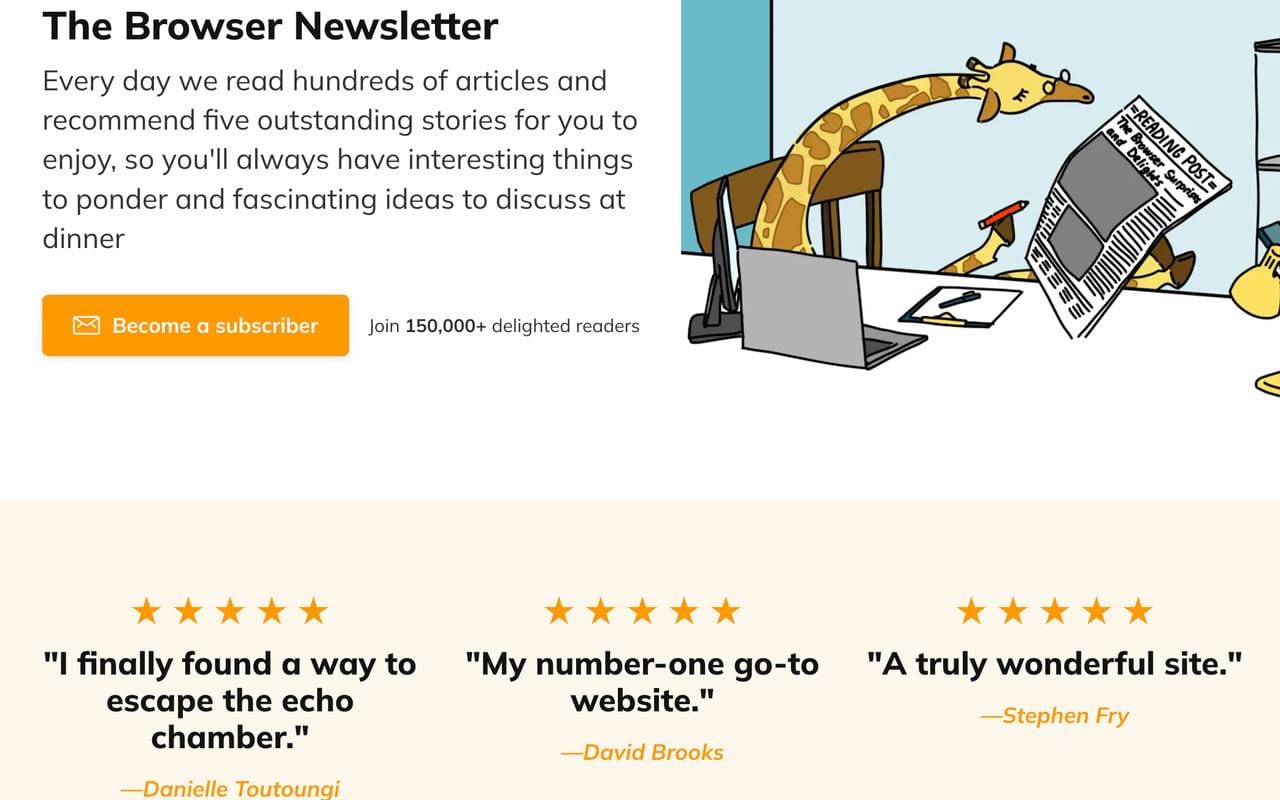
Choose the best template that fits your brand, pick branding colors and fonts, and craft your content to tease what you have inside your newsletter.
Remember, you want to entice someone to ‘buy into’ the hook or topic of your newsletter.
Here are some copywriting tips to help you hook your would-be subscribers:
- Use clear and concise copy – It’s better to tell exactly what a subscriber will get than to tell them in a round-about way
- Create a sense of exclusion – show that your paid newsletter is the cool kid on the block that you need to know right now by limiting access
- Keep it personal – This combines social proof and your sub-copy to show trust and credibility.
6. Launch & Start Getting Subscriptions
With that part taken care of, you need to get everything else to launch your paid newsletter and start getting subscribers. That means your socials, content schedule, and marketing efforts.
Optimize your social links
Make sure all your social media accounts point to your newsletter, which will help market your new offer and gain some subscriptions.
For example, Eve Arnold uses her Twitter profile to market her newsletter, the Part-Time Creator Club, which has over 18,000 subscribers.
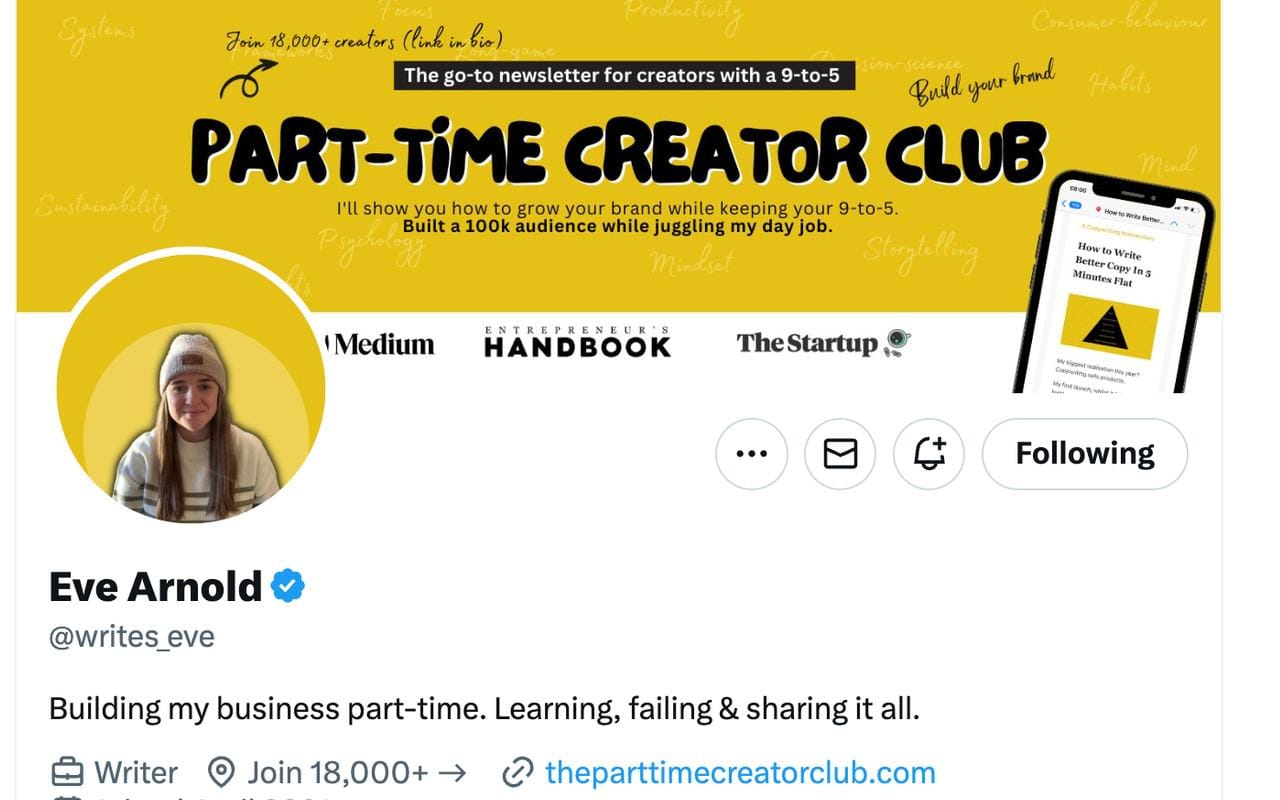
She also creates consistent social posts that link to her newsletter every single time to grow her newsletter every day.
Create a solid content schedule
Another thing to have before you launch is a content schedule. One way to market your paid newsletter is with your free newsletter. But this means you have to create multiple newsletters every week or every month.
So, to make sure you don’t miss a newsletter or burn out too quickly, pick days of the week to spend time creating or curating your newsletter. It’s also handy to pre-write or prepare newsletters so that you won’t feel rushed to create more content when you launch your newsletter.
Market your paid newsletter
Marketing your newsletter should also be a priority when launching your paid subscription. With your marketing efforts, you can reach your target audience and convince them to subscribe.
Other marketing efforts include teasing your paid newsletter in your free newsletter or using social media, video marketing, partnerships, and offering a tiered subscription option.
One way to use video to market your paid newsletter is with subscriber-only events like workshops, challenges, or reviews. This would help grow your free newsletter and get new eyes to your paid subscription.
For example, online business mentor Alex Tooby offers a free Instagram training masterclass to grow her newsletter. If she had a funnel to her paid newsletter, she could market it in her masterclass if the topic was relatable—which it should be.
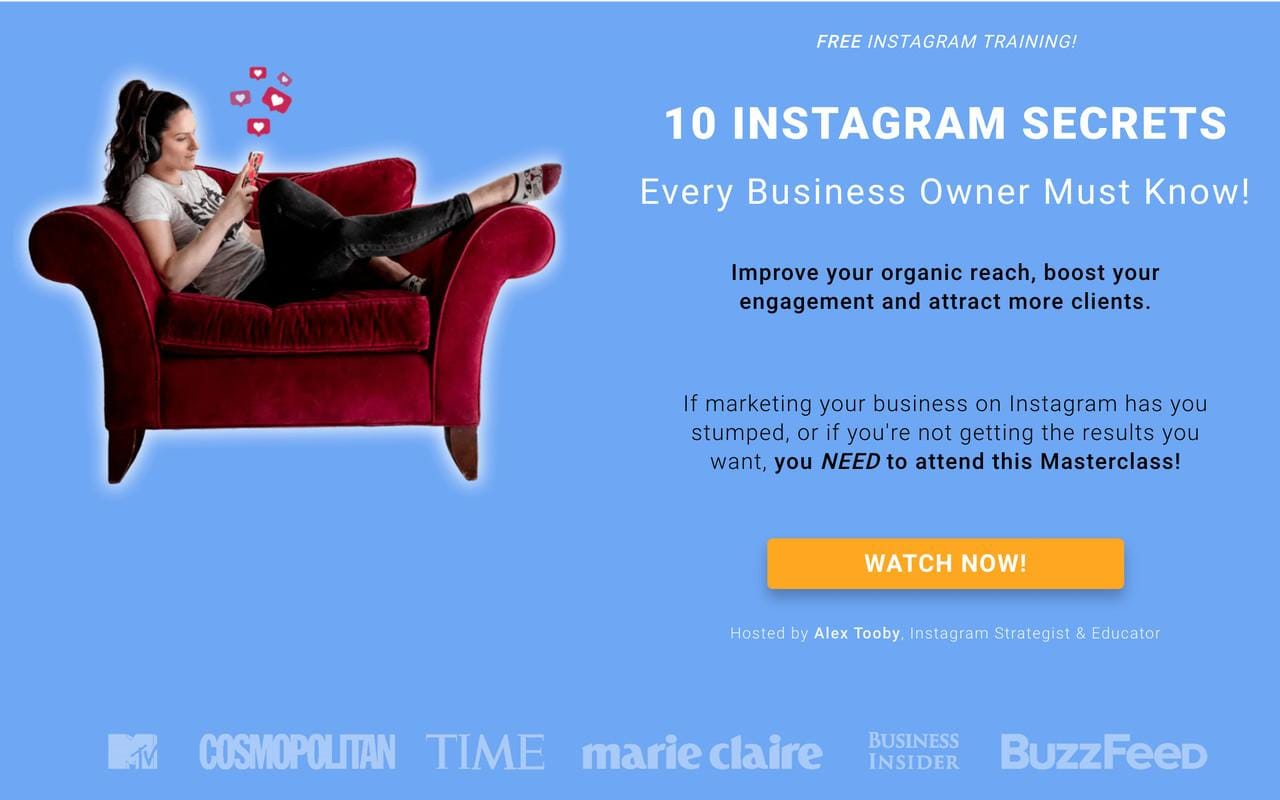
Collaborations or partnerships are another great way to grow your newsletter subscriptions. You do this by cross-promoting your newsletter to the collaborator’s audience.
This can instantly give you hundreds of new potential subscriptions with very little effort on your part.
If you haven’t already, make sure to offer a tiered subscription model to attract people with all budget levels and interests. This way, you can provide options for casual readers who might want basic access as well as more invested subscribers who are willing to pay for premium content or exclusive perks.
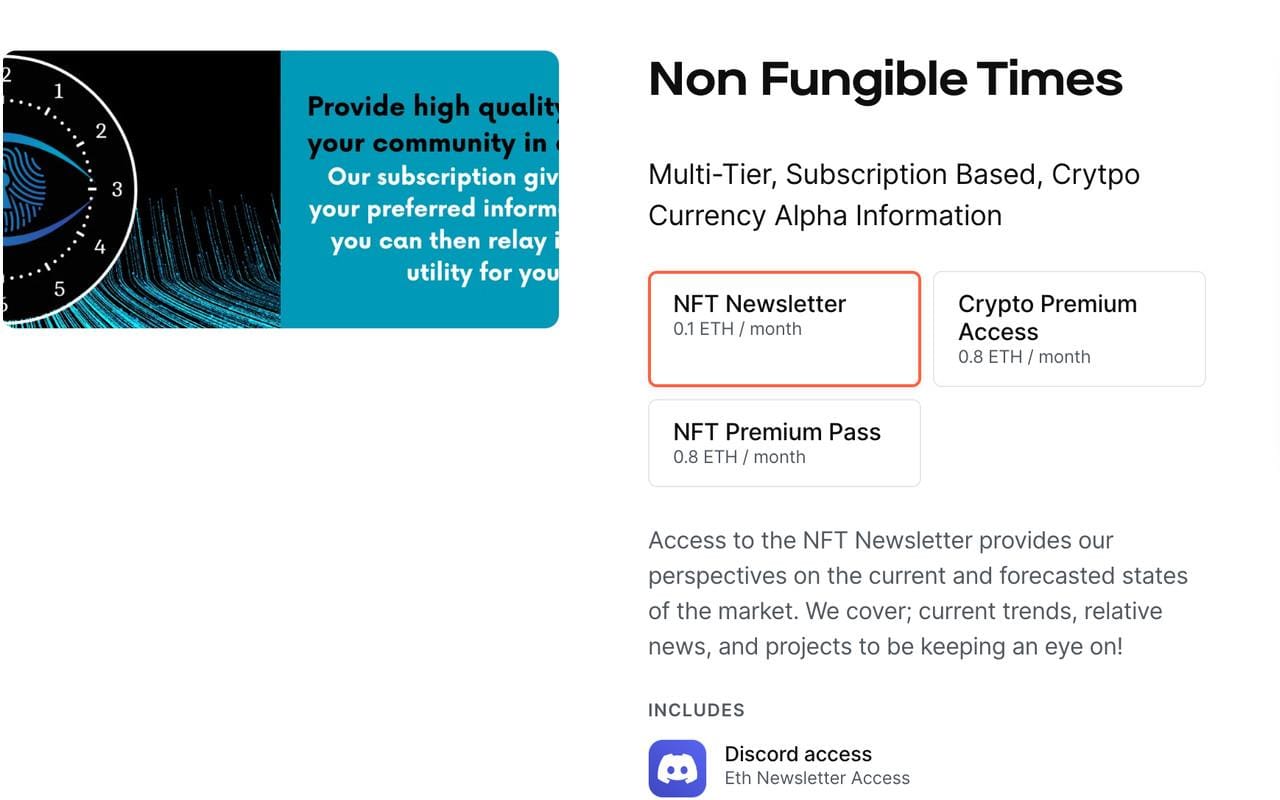
7. Keep Building and Growing
To grow a healthy paid newsletter, pay attention to subscriber retention, building a community, and monitor newsletter growth.
Subscriber retention
Keeping your subscribers is key, as it’s more cost-efficient to retain existing ones than to constantly acquire new ones. So, to build retention, consider offering exclusive perks that make them feel special.
These can be anything from free access to other experts in the field to special discounts on products to early bird access to events and workshops.
Building a community
Growing your paid newsletter aims to build loyal and engaged subscribers. This can create ambassadors to talk about your paid newsletter through word-of-mouth marketing.
For example, Leah Neaderthal helps women grow thriving consultant businesses in her paid newsletter, The Smarts Get Paid Newsletter.
She often posts upcoming episodes of her newsletter on LinkedIn and engages many of her subscribers with these posts, which helps increase the visibility of her content and attract new subscribers.
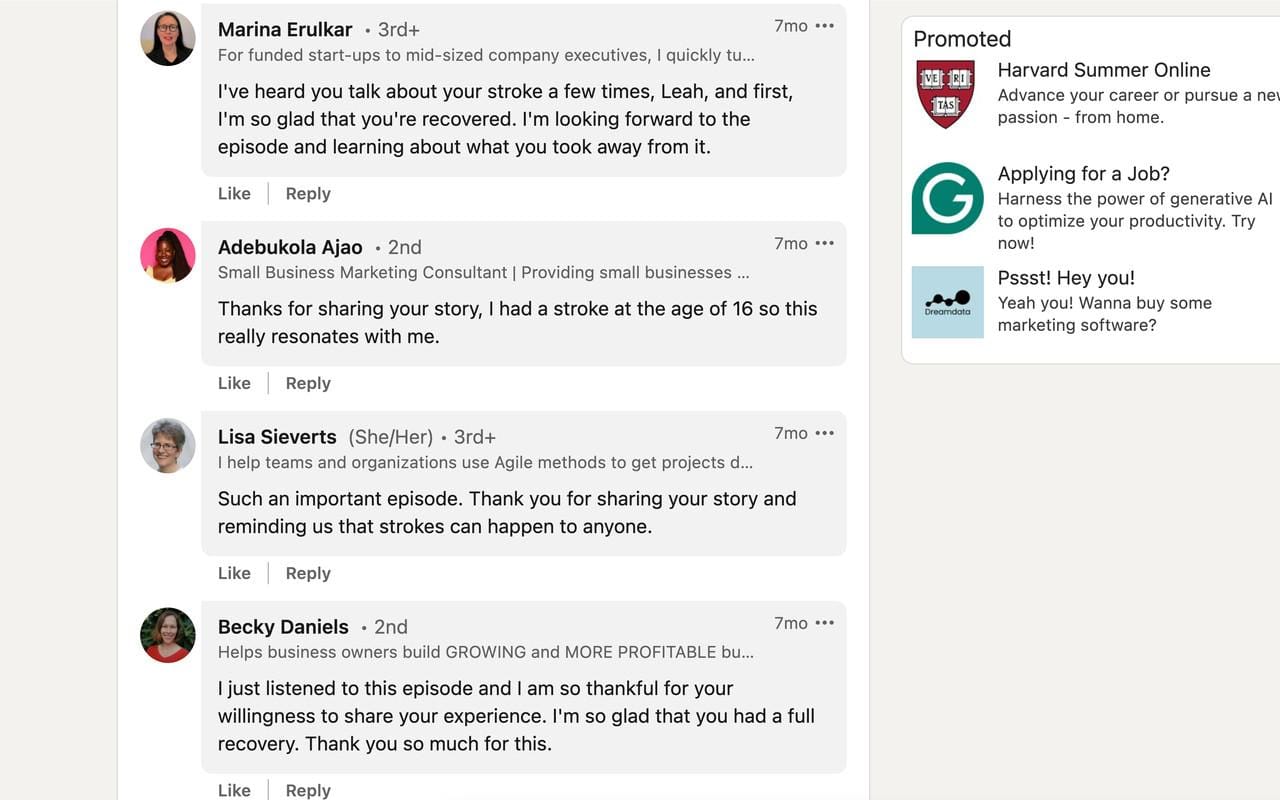
This builds a community by encouraging discussions and interactions that deepen their connection to Leah’s newsletter. This strategy not only boosts her subscriber count but also strengthens the loyalty of her existing audience.
Monitor newsletter growth
Keep track of your subscriber count and churn rates to see how many new people are joining – and leaving – your newsletter. This can give you a picture of how engaged your subscribers really are.
Another metric to watch for overall engagement is your open and click-through rates to gauge how well your content resonates. Creating a LinkedIn page for your paid newsletter and posting regularly about the latest episode can help with clicks and build a sense of hype.
Plus, look at your audience's demographics and behavior to tailor your content even better. This can help with your marketing copy on your landing page or social media.
If you find a challenge many of your subscribers face – for example, a lack of confidence in writing a novel – you can create content that helps them and use that as a relevant benefit in your copy to promote your newsletter.
Examples of Successful Paid Newsletters
Want to know how profitable a paid newsletter can be? Let’s check out these highly successful paid newsletters.
1. Flow State
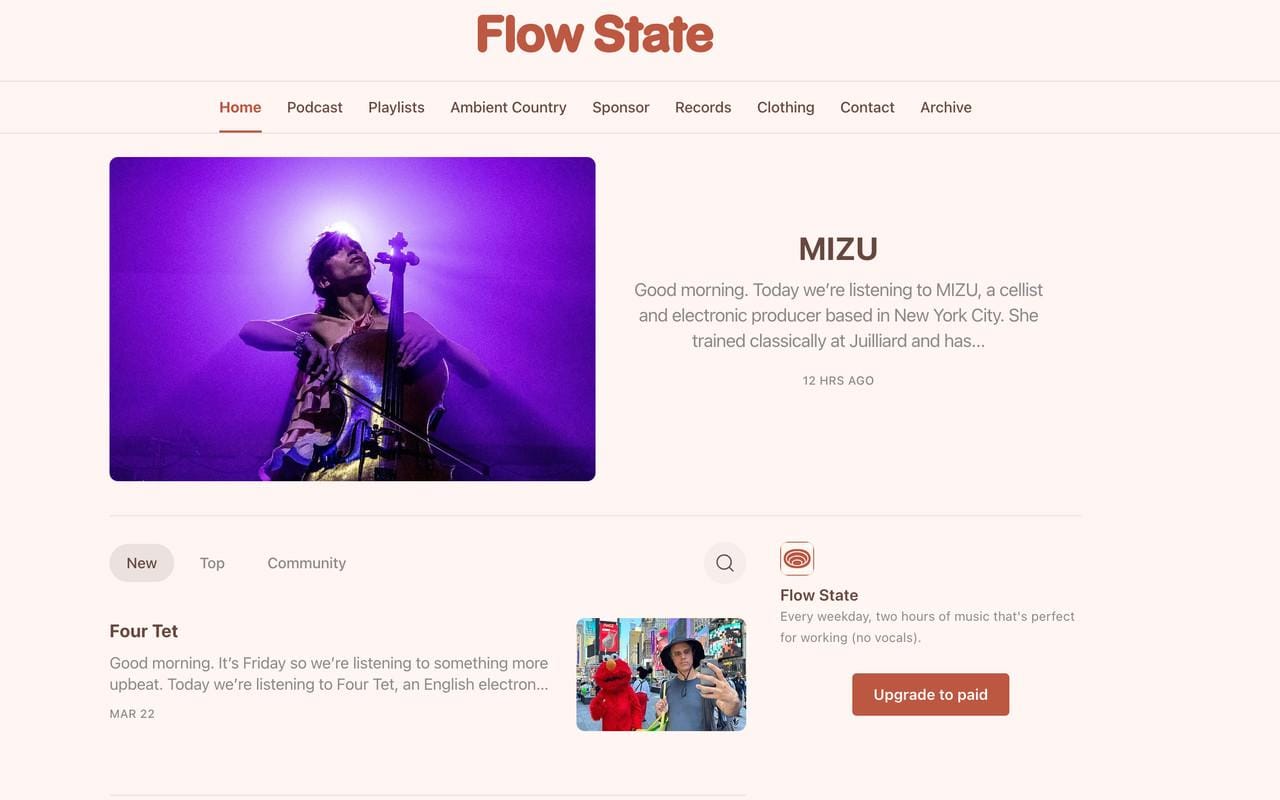
This is one of the best-paid and profitable newsletters out there. It’s delivered to your inbox every weekday and features two hours of music that's perfect for getting work done.
There are 32,000 subscribers. That means Marcus Moretti’s newsletter is potentially generating $160,000 a month.
What’s neat about this example is that Marcus only needs two hours a day to earn that much per month.
2. The Ferrari Market Letter
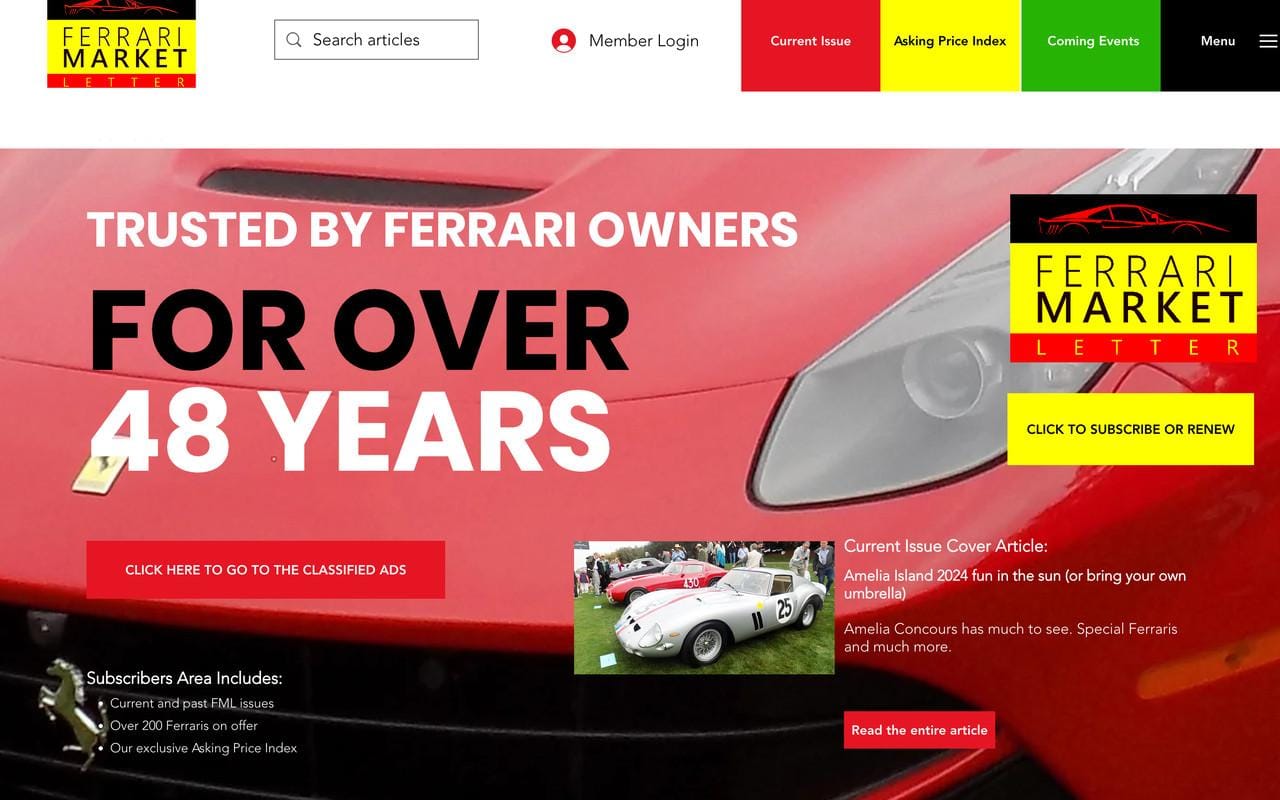
This paid newsletter generates $2M in revenue with 5,000 subscribers. But this idea didn’t start out as a newsletter. The Ferrari Market Letter started as a print publication and has been around for 40+ years. So their subscription model has online and print versions for buyers and sellers of second-hand Ferraris.
While this would be considered an outlier, it can help you decide what type of paid newsletter to start. For example, people who love cars, watches, purses, shoes, clothes, wine, whiskey, cigars, skiing, bicycling, hunting, etc. will pay big money to learn from, connect with, and buy from other enthusiasts.
3. Markets with Mando Newsletter
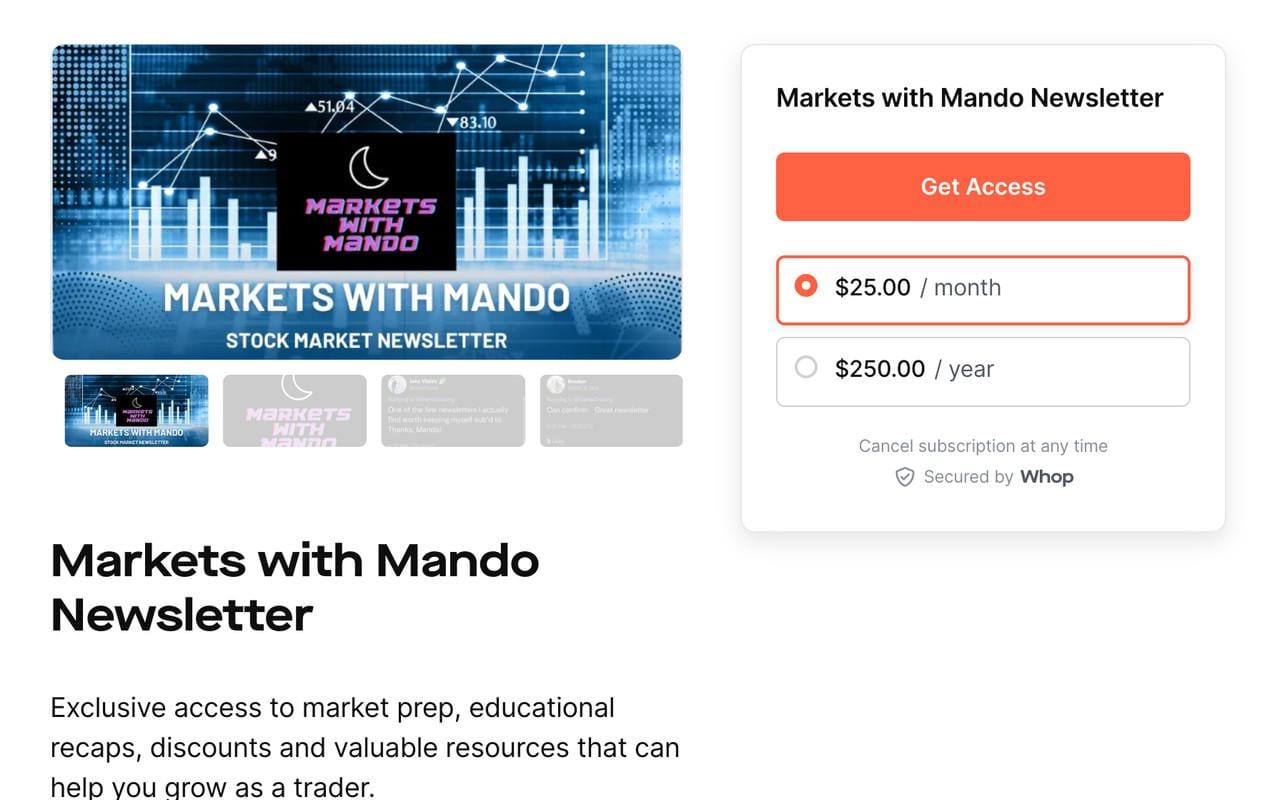
Whop’s Markets with Mando Newsletter is a stock market newsletter that shares market preparation, educational recaps, discounts, and valuable resources – like 45-minute sessions through Discord Voice or Zoom – that will help you become a better trader.
On Twitter, Mando Trading posted they had 500 subscribers. This equates to $12,500/month, making this a very profitable newsletter.
4. Investing.io
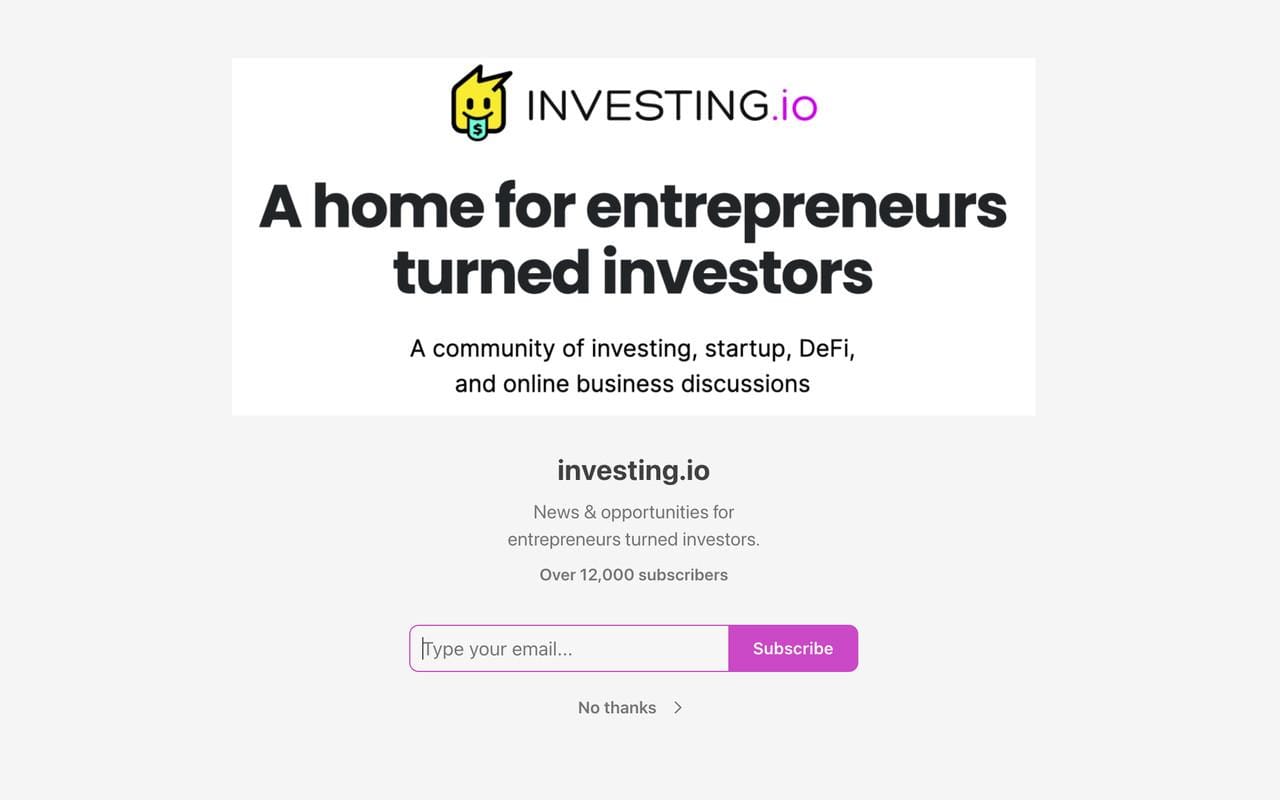
The Investing.io paid newsletter shares online business, market updates, crypto, real estate information, and startup advice.
Richard Patey used to build and sell content sites between 2016 and 2019 but wanted to find a small business model that wasn’t dependent on Google traffic.
He launched Investing.io and, with over 12,000 subscribers, has the potential of earning at least $60,000 a month.
How Whop Can Help You Launch a Paid Newsletter
Are you ready to start a paid newsletter with Whop?
To get started, log into your account in Whop and find the ‘login to Mailmodo.’
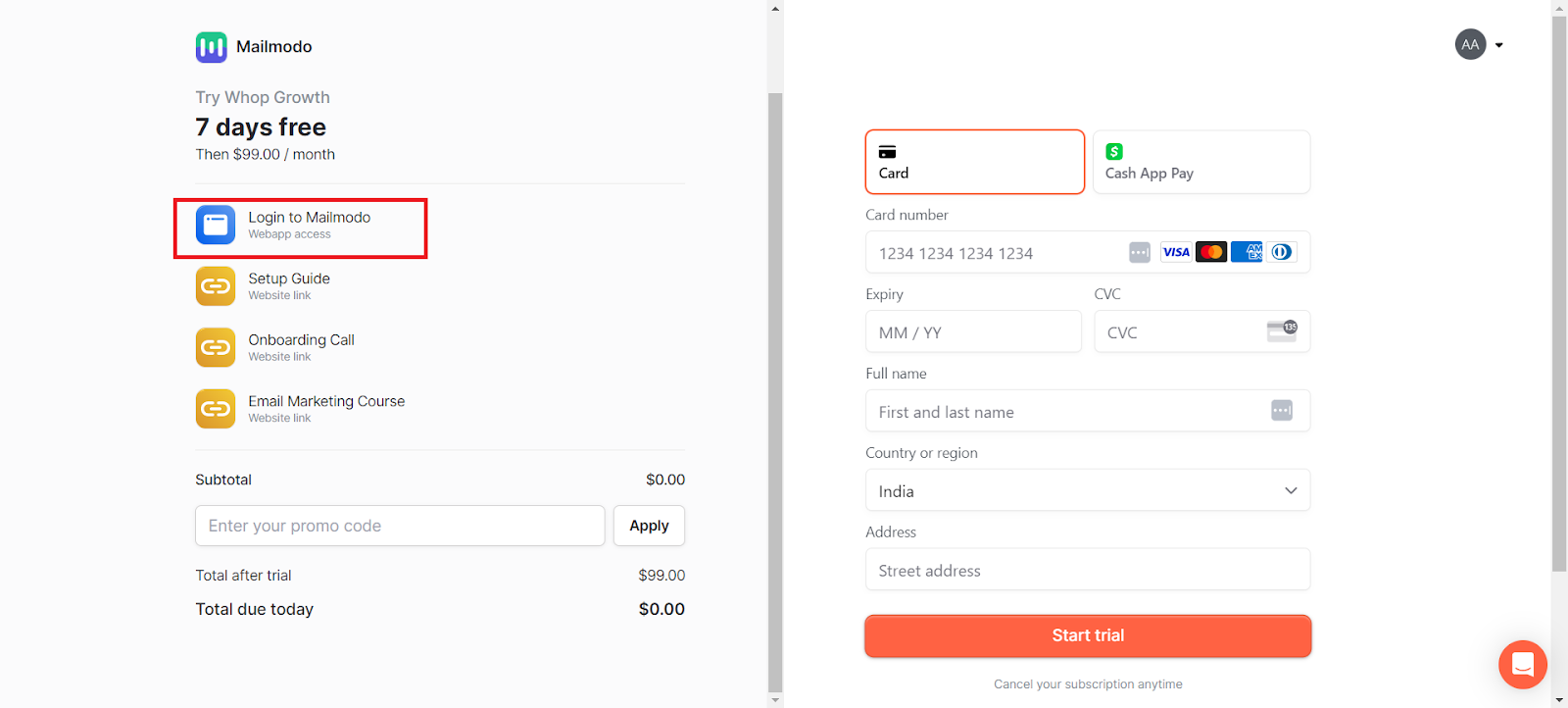
Next, integrate with Whop to sync your members as contacts into Mailmodo. You'll need to generate a Whop API Key from the Whop Dashboard and save it in Mailmodo's Integrations section.
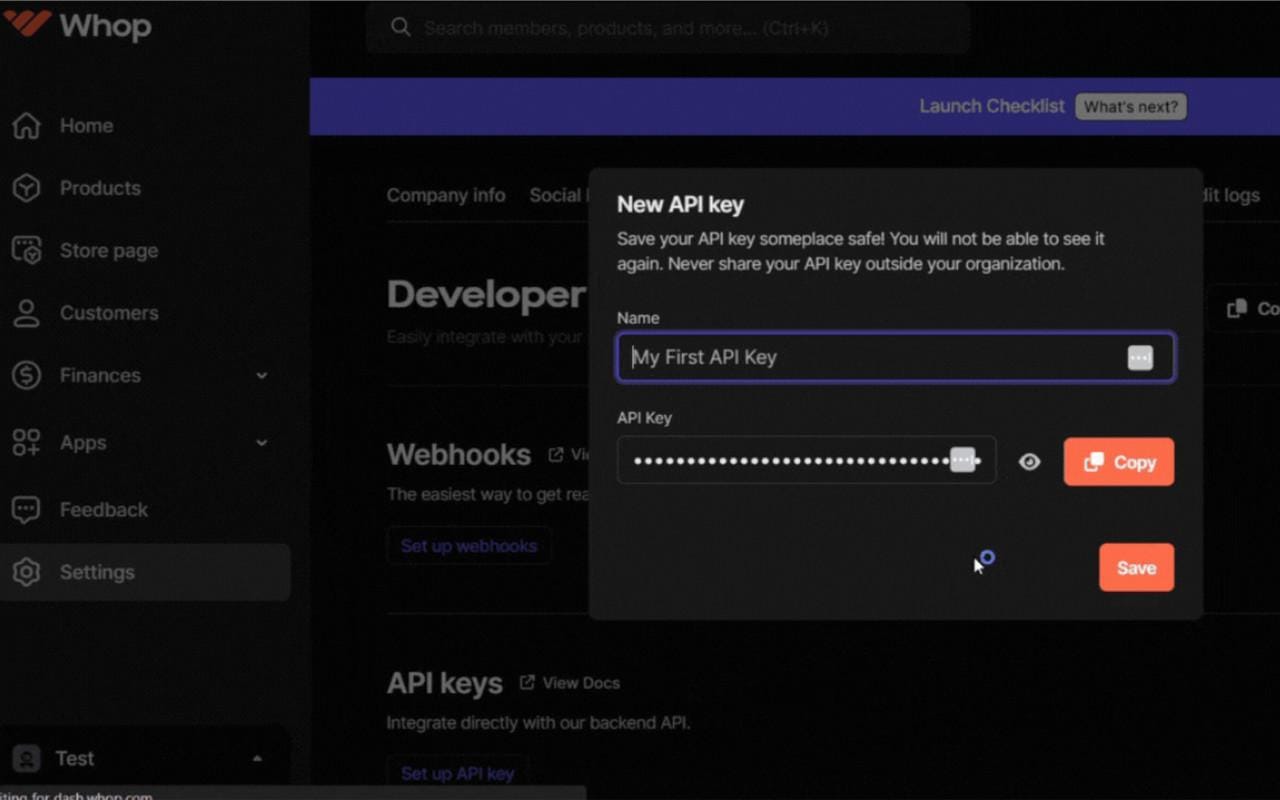
From there you can import additional subscriber lists into Mailmodo. You can also create segments to target specific audiences based on shared characteristics. This helps you send the right content to the right subscribers.
To design your emails, use Mailmodo's no-code template editor, which allows you to customize your design using drag-and-drop elements. You can also choose from pre-made templates for a quick start.
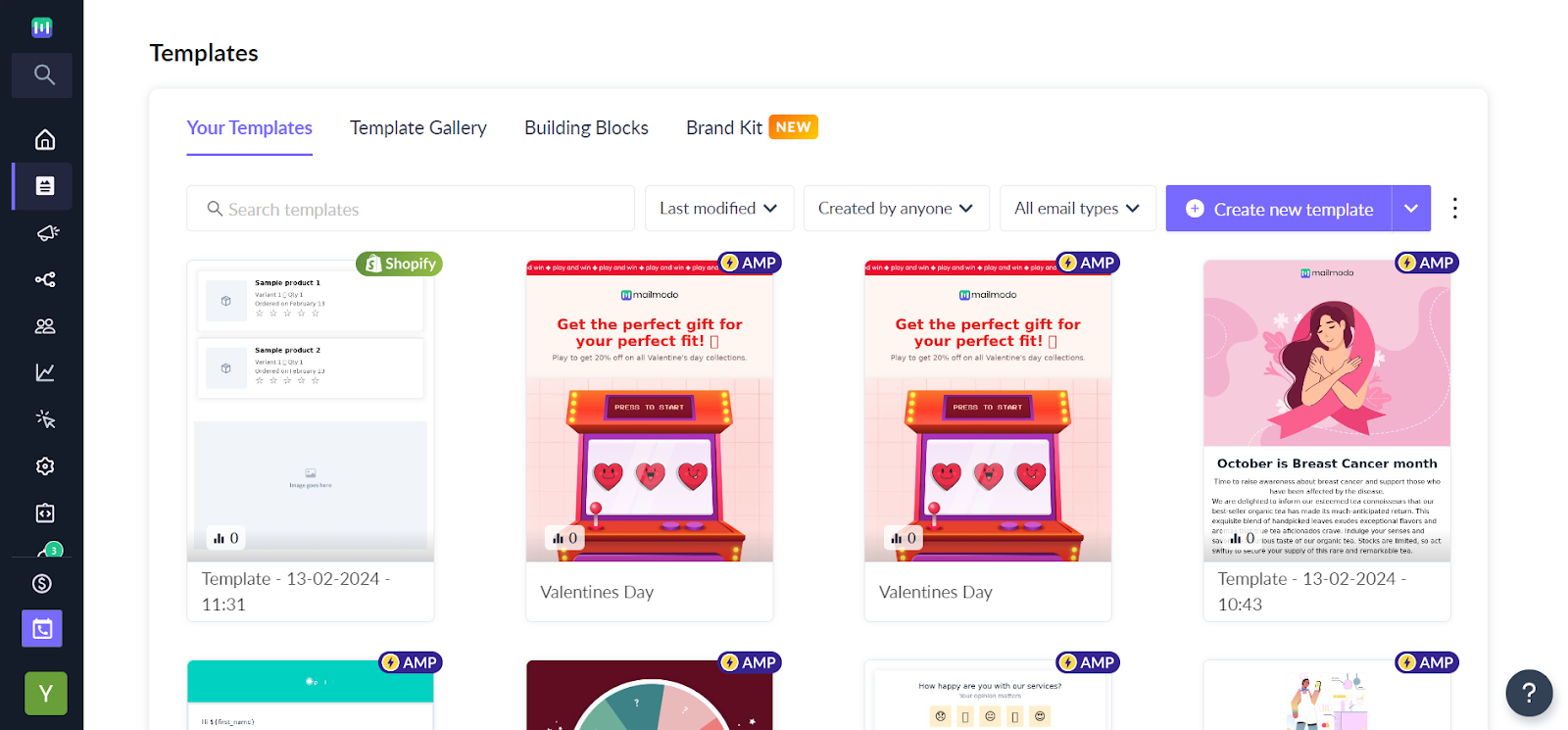
Add a custom email address to Mailmodo's sender settings and select an email delivery service.
Once everything is set up, you're ready to send out your campaigns. Use Mailmodo to track key performance metrics like email opens, clicks, and bounces. This data will help you understand your campaigns' performance and make informed decisions for future paid newsletters.
But don't stop there - once you have created your newsletter, support it with other digital products like a paid community, live event, or digital download. You've seen how easy it is to create a paid newsletter - what's stopping you from getting started today?
